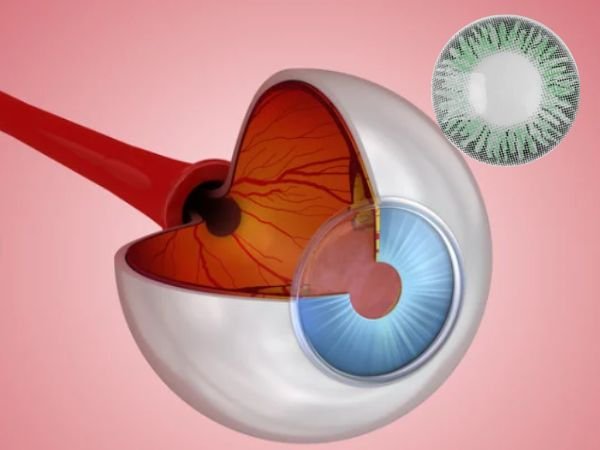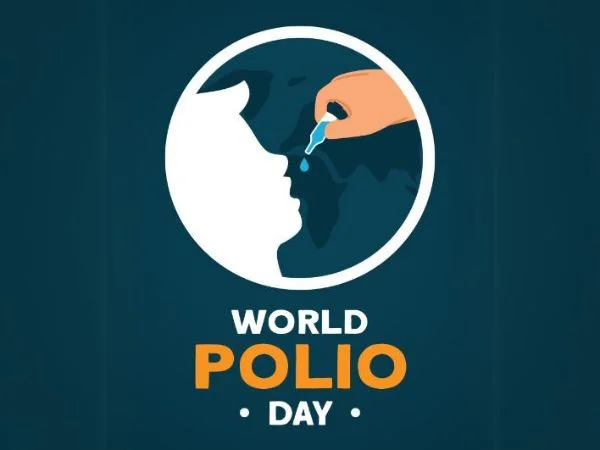Introduction: What is Corneal Transplant Surgery

You might not know that more than 10 million individuals globally are blind due to corneal blindness, the fourth largest cause of blindness globally. The most common cause of blindness but one of the rarest that needs surgery is corneal diseases, as per the National Eye Institute (NEI) and World Health Organization (WHO). The cornea — the transparent, dome-shaped outer layer of tissue covering the front of the eye — bends light.
Each patient would like to know, what is corneal transplant surgery and how is it curing blindness? Corneal transplant, or keratoplasty, refers to surgical excision of diseased or injured corneal tissue and its replacement with normal donor tissue for the purpose of restoring vision, removing pain, and improving cosmetic appearance of an injured or diseased cornea.
In this blog, we’ll explore what corneal transplant surgery is, the different types of procedures, success rates, associated risks, and what recovery looks like — offering a complete guide to this life-changing operation.
Understanding the Cornea

It is helpful to know the function of the cornea in vision before going on to what is corneal transplant surgery. It is clear, dome-shaped tissue that works along with the eye’s lens to form clear, sharp vision.
Nonetheless, the cornea is prone to a range of disease. Eye trauma, infection in the form of herpes simplex keratitis, corneal ulcers, and congenital defects like Fuchs’ dystrophy all can cause inflammation, scarring, or thinning of the corneal tissue. Complications resulting from previous surgery of the eye, in some cases irreparably damage the cornea, as do degenerative diseases.
When the cornea fogs, becomes irregular, or scarring occurs, it completely destroys vision and blinds a person. And that is when one has to perform a transplant. That is what this one is serving to inform what is corneal transplant surgery and why it is such a worthy choice in vision correction of patients with serious disease of the cornea.
What is Corneal Transplant Surgery?

So then, what is corneal transplant surgery? In simple words, what is corneal transplant surgery but a vision-restoring operation in which a diseased or damaged cornea is swapped with donor tissue? Also referred to as keratoplasty, the eye procedure is performed to enhance eyesight, banish pain, and improve the cosmetic appearance of a damaged or obstructed cornea.
The cornea itself is devoid of blood, and it contains fewer sites in which donor tissue will be rejected, and that is why corneal transplantations have one of the greatest success rates among any of the transplant procedures. The procedure may be full-thickness (penetrating keratoplasty) or partial-thickness (such as DSEK or DMEK) depending upon the severity of the damage. Either procedure, the aim is to replace the broken layers of the cornea with clear, healthy tissue that is harvested from an eye bank. All such patients with foggy vision, photophobia or eye pain because of corneal disease, as per the American Academy of Ophthalmology, can be optimal candidates for transplantation.
By replacing the faulty cornea, patients are likely to regain a miracle vision — in certain cases, after years of vision loss — and thus, corneal transplant surgery can actually be a life-altering surgery for most people.
Types of Corneal Transplant Surgery

When searching up what is corneal transplant surgery, it is best to be mindful of the several different procedures that are offered. Knowing the differences is educational of what is corneal transplant surgery in medical technical jargon and how exactly it is customized to the individual patient.
Penetrating Keratoplasty (PK):
This is the classic full-thickness corneal transplant, in which all that is damaged in the cornea is excised and replaced with a donor cornea. It’s most frequently applied where more than one layer of the cornea is damaged, like deep scarring, end-stage keratoconus, or traumatic loss of the cornea. The healing time could be longer (a year or more), and there’s more opportunity for rejection, but it’s still a sure thing for bad damage.
DSEK/DSAEK (Descemet’s Stripping (Automated) Endothelial Keratoplasty):
It is a partial-thickness transplant in which only the diseased endothelial layer of the cornea is exchanged. DSAEK is best suited for diseases like Fuchs’ dystrophy or endothelial failure. It is performed with a small incision, shorter healing time, and less risk of rejection than PK.
DMEK (Descemet Membrane Endothelial Keratoplasty):
The second newer more sophisticated form of DSEK, DMEK just substitutes the very thin Descemet membrane and endothelium without taking out nearly all of the patient’s natural cornea. It provides quicker visual rehabilitation, better visual acuity, and even lower rate of rejection but is technically harder to perform.
Surgical preference relies upon corneal damage severity, patient eye status, and surgeon as well. Knowing these classifications not only makes us better educated on precisely what corneal transplant surgery is all about but also introduces more specificity and accuracy into regaining vision.
The Procedure: Step-by-Step
If you’re trying to understand what is corneal transplant surgery, knowing the procedure step-by-step is essential. Every stage, from preparation to transplant, explains what is corneal transplant surgery in action and how it restores vision.
1. Pre-operative Assessments:
The patient is also provided with a full eye examination before surgery, including corneal imaging, visual acuity, and history review. The ophthalmologist will also examine the general condition of the eye and the type of transplant to be performed.
2. Surgical Procedure
The patients are sedated and locally anesthetized on the day of surgery, although in children or in complicated cases, general anesthesia may be administered. During operation:
In Penetrating Keratoplasty (PK), a ring-shaped part of cornea is removed by a trephine and replaced by donor cornea.
In DSEK/DMEK, the superficialmost layers within the corneal tissue are substituted. Endothelium tissue infected with it is removed and substituted with donor tissue placed in by cutting and positioned upon an air bubble.
3. Duration
It takes the process 30–90 minutes. Discharge is on the same day they come in. Though they may have someone pick them up and drop them off.
Following surgery, a protective shield is applied over the eye. And antibiotic or steroid eye drops are placed in the eye to prevent infection and rejection. Having undertaken all this has provided a worthwhile glimpse into what is corneal transplant surgery. And the sensitivity in this sight-restoring operation.
Recovery and Aftercare
Perhaps most significant to knowing what is corneal transplant surgery is recovery. Recovery informs us as much about what is corneal transplant surgery as does the surgery itself, revealing the necessity of prolonged monitoring and treatment.
Healing Timeline
Recovery varies with the type of transplant. Recovery of vision may take 12 months or more following PK, but DSEK or DMEK is flexible to accommodate faster recovery, occasionally 3 to 6 months. Blurry vision typically develops in weeks and remits ultimately.
Medication and Eye Protection
Antibiotic and corticosteroid eye drops are for the patients in order to avert rejection and infection. Eye drops for months, tapering gradually as per instructions from the ophthalmologist. An eye shield at night and sunglasses during the day protect the eye from accidental damage and sun exposure.
Follow-up Visits
Follow-up visits need to be more frequent in monitoring healing, intraocular pressure, and graft acceptance. Visits may be weekly at first, then monthly, and even further apart if the healing course is uneventful. With proper care, most of the patients see well in their eyes. Awareness of these recovery fundamentals is a clue to an understanding of what is corneal transplant surgery and to its success as a life-altering procedure.
Risks and Success Rates
No definition of corneal transplant surgery would be adequate without some mention of the risks and complications involved. While the surgery is extremely safe and fairly routine, it is not entirely risk-free — particularly months and years post-surgery.
Of these most severe of threats, graft rejection is perhaps the most troubling, occurring in 10% to 20% of patients, as stated by the American Academy of Ophthalmology. Treatment involves redness, irritation, blurring vision, and photophobia. Infection, glaucoma, corneal swelling (edema), and recurrence of the initial condition also can be issues.
Despite all those risks, is corneal transplant surgery nothing but a source of hope to millions. The surgery has incredible success rates when performed in otherwise healthy eyes. According to the National Eye Institute (NEI), success from the DMEK and DSEK procedure can be more than 90% within the fifth year. While for penetrating keratoplasty success is less depending on more intricate surgery.
Long-term outcome of vision results varies from person to person. But generally results in excellent visual improvement in quality and level of living. With proper following and aftercare, most patients are able to experience restored vision.
Life After Surgery
<iframe width=”1310″ height=”737″ src=”https://www.youtube.com/embed/Jl7DQ21au9g” title=”Corneal transplantation? धर्मेंद्र | में अभी भी बहुत ताकत है। मैं अच्छी आत्माओं में हूं | TV Health” frameborder=”0″ allow=”accelerometer; autoplay; clipboard-write; encrypted-media; gyroscope; picture-in-picture; web-share” referrerpolicy=”strict-origin-when-cross-origin” allowfullscreen></iframe>
Once you know what is corneal transplant surgery, of course, you would be curious about what comes next. Even though the recovery will be slow, most patients experience enhancement in the visual acuity, self-esteem, and function.
With the passing weeks and months since surgery, there is an improvement in vision with time. Vision is initially hazy, but as the eye heals and integrates the donor cornea within the eye. The sharpness of vision gets better — especially with procedures like DMEK or DSEK. There are patients, however, who would need corrective spectacles in order to have maximum possible vision.
Lifestyle adjustments will be necessary to accommodate long-term success. These are avoidance of contact sports, use of protective eyewear, and adherence to strict drug regimens.
For those patients not obtaining optimal vision function immediately, vision rehabilitation. Low-vision devices, occupational therapy, special training. It will be in a better position to facilitate patients’ ability to perform daily activities.
Real-life outcomes reveal the big picture of what is corneal transplant surgery and its contribution. Not as surgery process, but as a journey toward regained independence and living.
FAQs About Corneal Transplants
For how long will a corneal transplant last?
A successfully performed corneal transplant may endure from 10 years to several more. Posing a question regarding what is corneal transplant surgery. One should include that its duration is based on the type of transplant, cause behind it, and aftercare post-surgery.
Can both eyes receive corneal transplant surgery?
Yes, but not at the same time. Doctors typically treat one eye first and only after full recovery treat the second one.
When can I go back to work or lead normal activities?
Depending on the operation, most patients return to light activities within a week to a few days.
Is there an age limit that I can be to have a corneal transplant?
There is no age limit. Anyone who has significant trauma to the cornea can be a candidate. So what exactly is corneal transplant surgery? It’s a good procedure for people of any age.
What are the symptoms of graft rejection?
Redness, pain, blurred vision, and sensitivity to light. Identify these so that one can properly learn about corneal transplant surgery. And how to take care of the transplanted tissue.
Conclusion
As a whole, understanding what is corneal transplant surgery places patients in the know to make well-educated. Confident decisions regarding their eyes. Though the concept of eye surgery is daunting. Knowing what is corneal transplant surgery. And what to anticipate before, during, and after — can alleviate fear and lead to realistic expectations. As a patient with damaged cornea or requesting someone close, learning is the basis of hope and healing. Always consult with a skilled eye and corneal surgeon to assess your individual case and decisions. Medical knowledge, and judgment, is the key to a healthy and successful outcome. Educating yourself on what is a corneal transplant procedure is life-changing — and life-saving.


